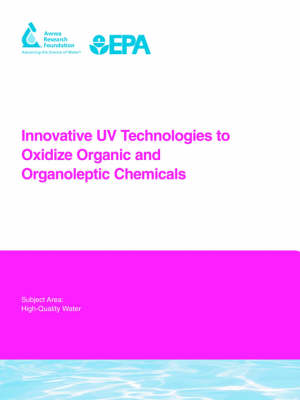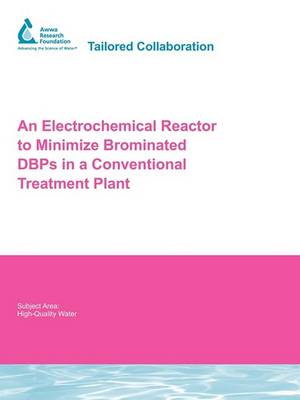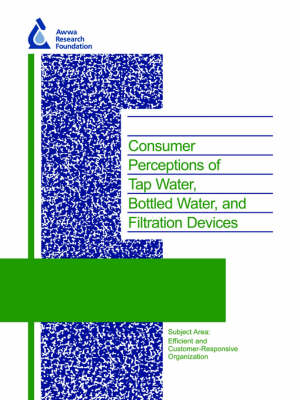Water Research Foundation Report
5 total works
Early Warning and Management of Surface Water Taste-and-Odor Events
by W Taylor, R. Losee, M. Torobin, G. Izaguirre, D. Sass, D. Khiari, and Khalil Z. Atasi
Published 30 June 2006
The objective of the report was to focus on the detection and management of Taste-and-Odor (T&O) events in source waters prior to reaching the treatment plant and therefore prior to consumer complaints. The goal was to achieve control at the source or through strategic use of storage and conveyance facilities, thus relieving or reducing the burden on the plants. The difficulty in meeting these objectives lies in the extreme sensitivity that many individuals have for the most difficult to manage earthy/musty T&O compounds, geosmin and 2-methylisoborneol (MIB). There is a very narrow window of opportunity to detect a T&O event and implement a management strategy before complaints begin. This study highlights MIB and geosmin because of their widespread occurrence in drinking water and their resistance to removal in the treatment process. The project was divided into several major components: (1) a review and summary of supportive information such as analytical methods, T&O producing algae, and lake simulation models, (2) analysis of a wide variety of participating utility systems (simple to complex) to use as examples to illustrate comprehensive T&O management strategies, (3) a synthesis of demonstrated methods for systematically developing and implementing a T&O early warning and comprehensive management program, and (4) surveys to determine the most effective ways to communicate T&O issues to consumers and to sub-agencies.
Recent regulations are now requiring lower chlorinated disinfection by-products (DBPs) and inactivation of chlorine resistant pathogens such as Cryptosporidium parvum. Ultraviolet light is now considered a compliance technology for primary disinfection of surface waters in the Stage 2 Rules. The objectives to this project were to: evaluate the efficacy of three different UV technologies for treatment of organic contaminants in waters of varying quality; evaluate the UV technologies with additions of hydrogen peroxide (H2O2) to promote advanced oxidation (AOP) for treatment of the contaminants; determine the extent of disinfection by-product (DBP) formation including aldehydes, carboxylic acids, and post-chlorination DBPs, following UV treatment; pilot test two UV technologies alone and under AOP conditions at two utility field sites for contaminant treatment to develop operational experience and preliminary cost and design data.
An Electrochemical Reactor to Minimize Brominated DBPs in a Conventional Treatment Plant
by L. Boulos, Helene Baribeau, B. Carrico, G. Crozes, D. Kimbrough, and I. H. (Mel) Suffet
Published 14 October 2008
The presence of bromide in drinking water typically leads to the formation of brominated DBPs upon chlorination. Bromide is not removed by conventional water treatment processes. Ion-exchange and high-pressure membrane filtration remove bromide but produce a concentrated brine waste stream. One emerging technology for bromide removal is electrolysis. Limited design data on bromide removal by electrolysis are available in the literature. However, design parameters, operational constraints, and costs need to be defined.
The objectives of the study were to (1) determine operational conditions under which electrolysis removes bromide and decreases the formation of halogenated disinfection by-products (DBPs); (2) investigate the effect of electrolysis on ozonation DBPs (bromate), bacterial regrowth, and taste andor; (3) evaluate the impact of electrolysis on conventional coagulation/flocculation/sedimentation and ozonation; (4) evaluate scalability and conceptual design issues; (5) determine preliminary capital and operational costs; and (6) determine future needs for demonstrating the technology. A four phased-approach was undertaken to conduct this project.
During the first phase, the electrolytic reactor was designed, constructed, and activated. During the second phase, the electrolytic reactor was operated under several conditions of hydraulic residence time, current level, and influent bromide level. Key analytical parameters were measured, including bromide, bromine, chlorine, and THM and HAA concentrations. During the third phase, conventional treatment consisting of coagulation/flocculation/sedimentation and/or ozonation was tested downstream of electrolysis to investigate whether electrolysis is feasible in a conventional treatment plant context. During the fourth phase, scale up, safety, and conceptual design issues were identified and preliminary costs estimated. A workshop was held towards the end of the study to identify future needs.
The objectives of the study were to (1) determine operational conditions under which electrolysis removes bromide and decreases the formation of halogenated disinfection by-products (DBPs); (2) investigate the effect of electrolysis on ozonation DBPs (bromate), bacterial regrowth, and taste andor; (3) evaluate the impact of electrolysis on conventional coagulation/flocculation/sedimentation and ozonation; (4) evaluate scalability and conceptual design issues; (5) determine preliminary capital and operational costs; and (6) determine future needs for demonstrating the technology. A four phased-approach was undertaken to conduct this project.
During the first phase, the electrolytic reactor was designed, constructed, and activated. During the second phase, the electrolytic reactor was operated under several conditions of hydraulic residence time, current level, and influent bromide level. Key analytical parameters were measured, including bromide, bromine, chlorine, and THM and HAA concentrations. During the third phase, conventional treatment consisting of coagulation/flocculation/sedimentation and/or ozonation was tested downstream of electrolysis to investigate whether electrolysis is feasible in a conventional treatment plant context. During the fourth phase, scale up, safety, and conceptual design issues were identified and preliminary costs estimated. A workshop was held towards the end of the study to identify future needs.
The objectives of this project were (1) to measure consumer satisfaction with tap water quality, (2) to investigate demographic trends in consumer satisfaction and consumption of tap water alternatives, (3) to identify the factors that cause consumers to purchase and use bottled water and POU/POEs, and (4) to develop a list of recommendations for water utilities that can improve consumer satisfaction and help bridge gaps between perception and reality. The following are highlights from the research project: Consumption rate of tap water alternatives is highly dependent on geographic location (20% usage rate in the Midwest vs. 80% on the West Coast). Tap water drinkers are more satisfied (20% on average) than tap water alternative drinkers concerning various aspects of tap water (e.g., overall quality, taste, appearance, smell, safety, healthiness). Tap water quality had limited influence on consumer satisfaction. The highest level of correlation (between satisfaction and water quality) was found to have an R2 - value of 34%-64% for hardness and total dissolved solids. Safety was the primary motivator for filtered water drinkers. Bottled water drinkers were divided between taste, safety, and healthiness.
UV Disinfection for Large Water Plants CD ROM
by R. Hulsey, Joel J. Ducoste, and Karl G Linden
Published 3 August 2007
As UV technologies develop and improve, and as water treatment plants continue to expand and modify to comply with disinfection and disinfection by-product regulations, the industry would benefit from the ability to forecast UV applicability to various large treatment plants.
The installation and design issues associated with UV disinfection are presented as a learning tool on the CD-ROM. A decision tool was developed enabling utilities to explore the issues and costs of installing a UV disinfection system at their facility. The tool allows the user to input its design criteria and to establish the footprint of the UV system and associated operating and capital costs. Five UV conceptual designs were developed for both filtered and unfiltered systems with capacities ranging from 150 mgd to 540 mgd. Excerpts from the conceptual designs are included on the CD.
The installation and design issues associated with UV disinfection are presented as a learning tool on the CD-ROM. A decision tool was developed enabling utilities to explore the issues and costs of installing a UV disinfection system at their facility. The tool allows the user to input its design criteria and to establish the footprint of the UV system and associated operating and capital costs. Five UV conceptual designs were developed for both filtered and unfiltered systems with capacities ranging from 150 mgd to 540 mgd. Excerpts from the conceptual designs are included on the CD.



